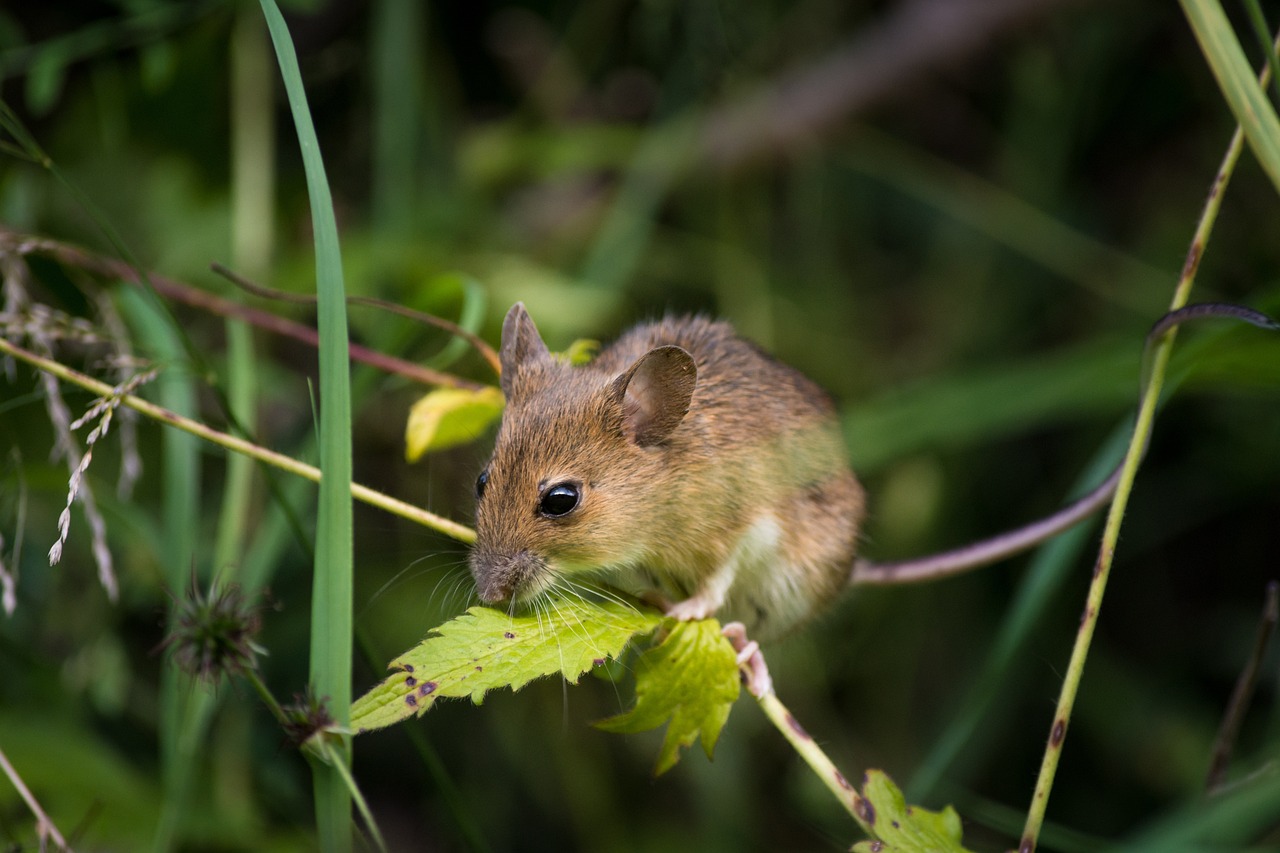In a world increasingly fraught with synthetic chemicals and artificial interventions, the quest for natural solutions has never been more pressing. When it comes to the domestic dilemma of rodent infestation, many homeowners find themselves at a crossroads.
On one hand, the traditional methods of extermination often involve toxic substances that pose risks to both humans and pets. On the other hand, the urgency to reclaim one’s living space from these unwelcome guests is palpable.
Enter the tactics of how to get rid of mice naturally – a strategy that marries efficacy with environmental responsibility. This approach not only alleviates the immediate concern but also addresses the ethical implications of indiscriminate chemical usage.
Common Areas Where Mice Tend to Hide
Pinpointing the areas where mice tend to hide is essential for devising a thorough rodent control strategy. By focusing on these specific locations, the chances of enduring a long-term infestation are substantially reduced.
Mice excel at finding obscure nooks for refuge, often escaping the notice of even the most observant homeowners. Kitchens are a prime locale for these creatures, given the ready availability of food. Here, they may conceal themselves behind large appliances or within the recesses of cupboards, taking advantage of the cover these spots afford. Attics are another preferred hideout, offering both isolation and a lack of regular human intrusion. In these lofty spaces, mice can establish nests among insulation and stored items, largely free from disturbance.
Subterranean levels like basements are similarly attractive, providing a dim, temperate setting ideal for nesting. The internal recesses of walls and crawl spaces also serve as sanctuaries, protected by the home’s very architecture. Outbuildings such as garages and sheds, often cluttered and situated away from the primary living area, also make excellent refuges for these pests.
The Health Risks Associated with Mice in the Home
The existence of mice in residential settings is fraught with a wide array of health hazards that go beyond simple inconvenience or annoyance. These small rodents act as carriers for various zoonotic illnesses, encompassing Hantavirus, Salmonellosis, and Leptospirosis among others.
Excrement and urine from mice harbor infectious agents that have the potential to adulterate food and water, leading to gastrointestinal disorders. Additionally, the allergens present in their fur and dander can intensify allergic symptoms and contribute to respiratory issues like asthma. The deceptive aspect of these health threats is their tendency to initially present as routine sicknesses, only to later evolve into more acute conditions.
Beyond the realm of disease dissemination, mice are infamous for their propensity to chew on materials, including electrical wiring. This behavior significantly increases the likelihood of electrical malfunctions and, consequently, fire hazards.
How To Get Rid of Mice Naturally
Using Onions to Create a No-Go Zone
Rich in sulfur-based compounds, onions act as a natural deterrent against rodents. Mice have olfactory systems that are acutely sensitive to these elements, making their habitat uncomfortable. To put this strategy into action, acquire an adequate supply of onions, ideally organic to eliminate the risk of pesticide interference.
Cut the onions into sizable pieces, tailored to the dimensions of the area you aim to secure. Distribute these pieces around the borders of the designated space, taking care to keep them out of reach of children and pets. The aromatic compounds will evaporate into the surrounding air, forming an unnoticeable but effective blockade.
To sustain the effectiveness of this natural repellent, it is crucial to refresh the onion pieces every one to two days. This technique is a key component in understanding how to get rid of mice naturally, eschewing the need for toxic substances or cruel trapping mechanisms. By carefully employing this method, one can create a successful rodent-free boundary, thereby protecting both assets and health.
Using Mesh and Steel Wool as Physical Barriers
These materials act as formidable barriers, effectively sealing the access routes commonly used by mice. Steel wool, with its abrasive and fibrous texture, serves as a nearly insurmountable hurdle for these rodents. First, pinpoint the likely entryways, which could vary from minute cracks in the building’s foundation to openings in roof vents. After identification, tailor pieces of mesh or steel wool to snugly fit these gaps. Protective gloves are essential during this phase to prevent any potential harm.
For augmented effectiveness, consider applying a layer of caulk around the mesh or steel wool. This not only strengthens the barrier but also adds an extra deterrent layer. The caulk functions as a binding agent, prolonging the durability of the physical impediment.
Creating a Peppermint Oil Spray
Derived from the mentha piperita plant, peppermint essential oil is renowned for its strong scent, which is highly disagreeable to rodents. To formulate a peppermint oil spray, you will need a spray bottle, high-quality peppermint essential oil, and distilled water. Mix 20-30 drops of the essential oil with one cup of distilled water in the spray bottle, shaking the mixture well to ensure uniformity.
For effective application, it is crucial to target areas prone to rodent entry, such as gaps, plumbing openings, and spaces beneath kitchen cabinets. A bi-weekly spraying regimen is advised for maximum efficacy. The intense aroma of the peppermint oil acts as a natural deterrent, interfering with the mice’s sense of smell and encouraging them to relocate.
Safe Food Storage Practices
It’s crucial to recognize that the primary allure for mice is the availability of food. Eliminating this enticement is key. Choose hermetically sealed containers constructed from robust plastic or glass to keep foodstuffs. These receptacles are resistant to the chewing abilities of mice, serving as an effective repellent.
Additionally, the role of hygiene cannot be overstated. Consistently clean surfaces, floors, and storage compartments to get rid of food particles. Thorough sanitation not only removes the sustenance but also dispels the scent markers that draw mice in.
Also, contemplate the tactical positioning of food supplies. Elevate commonly used items like fruits and bread, placing them out of reach from the floor. This renders it difficult for mice to access them, thereby lessening the chances of an infestation.
Cayenne Pepper and Garlic Sachets
Cayenne pepper, rich in capsaicin, acts as a powerful deterrent against rodents due to its intense smell. To apply this technique, liberally distribute cayenne pepper in zones where mouse activity is prevalent. The strong aroma creates an olfactory disturbance for the mice, encouraging them to vacate the premises.
Conversely, garlic sachets act as a formidable scent barrier against these small intruders. To craft these sachets, encase chopped garlic in a cloth pouch and seal it securely. Place these aromatic sachets in strategic locations where mice are commonly found. The overpowering garlic aroma confuses the rodents, rendering the area unattractive to them.
The Role of Pets in Mouse Control
The role of pets, particularly cats, in mice control is a subject of considerable significance, both from an ecological and a domestic standpoint. Cats, revered for their predatory prowess, serve as natural deterrents to mice populations. Their presence alone often suffices to dissuade mice from taking up residence in human abodes. This phenomenon is not merely anecdotal; it is substantiated by empirical evidence. Studies have demonstrated that the olfactory markers left by cats can act as potent repellents, thereby mitigating the proliferation of mice in residential areas.
However, it is imperative to consider the ethical implications of utilizing pets as instruments of pest control. While cats are instinctively inclined to hunt, the act of deliberately deploying them for mice control raises questions about animal welfare. Moreover, the efficacy of this approach is contingent upon a multitude of variables, including the cat’s age, health, and hunting aptitude.






0 Comments